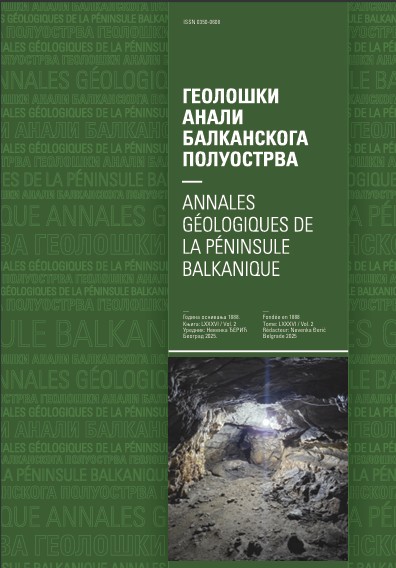Hydrogeologic structures in two Serbian spa towns - Sijarinska Banja and Selters Banja
Abstract
The objective of the paper is to identify the boundaries of hydrogeologic structures in which natural mineral waters occur, using two examples: old mineral water (Sijarinska Banja) and young mineral water (Selters Banja). The research addresses the distance from recharge zones, depth of occurrence, and points of discharge. Apart from the three spatial dimensions, the study also includes the time dimension - water age. The following parameters are examined: geologichydrogeologic conditions in the places of occurrence of mineral water, connection between mineral water and permeable fault zones, distance of surface water divides, previously-defined maximum possible depths of occurrence, possible flow rates, and the determined age. If the flow followed a straight line, the maximum distance of the recharge zone would be up to 7 m for the young and up to 11 km for the old mineral water. However, it is obvious that this is never the case in fractured systems, given that water travels much longer distances from the point of entry to the point of drainage from aquifers. Assessment of geologic-hydrogeologic and hydrodynamic conditions, relative to the determined age of the mineral water, leads to the conclusion that the distance between the recharge and drainage zones can be less than 5 km. The paper shows that insight into the depth of infiltration into permeable fault zones can also be gained by studying the depth of circulation relative to known hydrodynamic zones. The inference is that the largest amount of groundwater is restored in the hydrodynamic zone of slow groundwater renewal, which is below a depth of 1.5 km at Sijarinska Banja and below 1.3 km at Selters Banja.
Copyright (c) 2022 Geološki anali Balkanskoga poluostrva

This work is licensed under a Creative Commons Attribution 4.0 International License.










